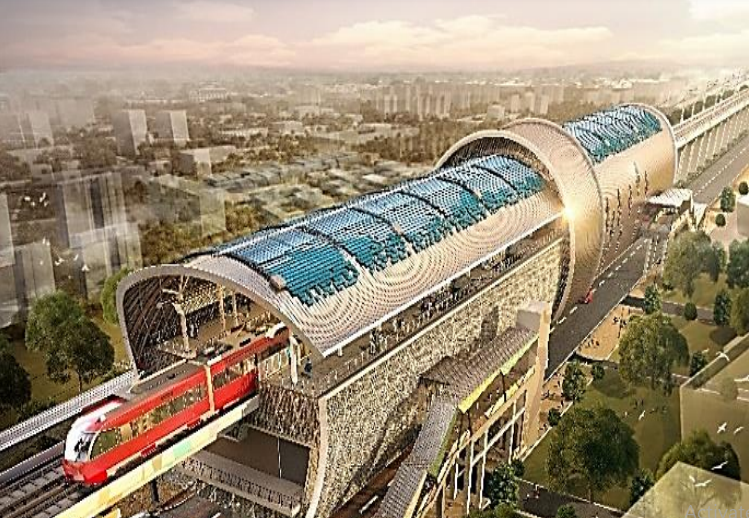
Close

Approach Words: Integrated City, Sustainability, Urban Livability
Public Policy Instruments: Financial Mechanism, Physical Intervention, Planning
Najaf Karbala Metro is a mass rapid transit system connecting the cities of Najaf and Karbala in Iraq.1 The project was initiated in response to the increasing demand for large-scale transportation to accommodate the continuous influx of millions of pilgrims throughout the year and weekly visitors drawn by religious and historical significance of both cities.2
Designed to serve over 1 million passengers per day,3 the project aims to provide a safe, efficient, and environmentally friendly electric transportation system.4 It also seeks to significantly reduce traffic congestion in Najaf and Karbala5 while enhancing environmental quality through a clean, electric-powered transport network.6

Title: Map Showing Najaf Karbala Metro Line and Stations
Source: Click Here

Title: Main Characteristics of the Project
Source: Click Here

Title: 3D View Showing the Proposed Najaf Karbala Metro Project
Source: Click Here

Title: 3D View Showing the Proposed Najaf Karbala Metro Project.
Source: Click Here
Spanning approximately 90 kilometers, the metro line extends from Najaf Airport to Karbala city center.7 It includes four main stations along the route, starting from “Najaf Airport” as the first station (Terminal 1), then passing through the “Safi Al Safa” area as a second station, and from there to Karbala Airport as a third station, reaching the “Baghdad Bus station” in Karbala city as a fourth station (Terminal 2) on the railway line.8
The railway network will feature high-speed express trains operating at an estimated speed of 240 kilometers per hour. These fully automated, driverless electric metro trains will be equipped with air conditioning, communication systems, cellular frequency support, and comprehensive safety features.9 The design also includes dedicated compartments for women and children, along with priority seating for individuals with special needs, pregnant women, and the elderly.10
Primarily, the metro railway will be elevated to enhance safety and minimize interference with existing streets and infrastructure. However, in certain areas, sections of the railway may be built at ground level to reduce costs.11



Contractor/Implementer
The metro stations will be equipped with elevators, both movable and fixed escalators, ticket sales areas, shops, cafeterias, restrooms, and administrative and service rooms for air conditioning, electricity, communications, and control.12 The stations will be integrated with an extensive transportation network, including bus and taxi services. Additionally, two main parking facilities will be developed, accommodating up to 10,000 vehicles.13
The project is initiated by the Ministry of Transport14 through the National Investment Commission (NIC).15 The main consultancy team consists of a Malaysian-Emirati consortium, including Consultant HSS (CHSS) and HSS Engineers Berhad (HEB).16 The project will be developed under a design, build, operate, maintain, finance and transfer mode (DBOMFT),17 with NIC having opened bids for implementation.18
Project Link
Endnotes
N.A.
References